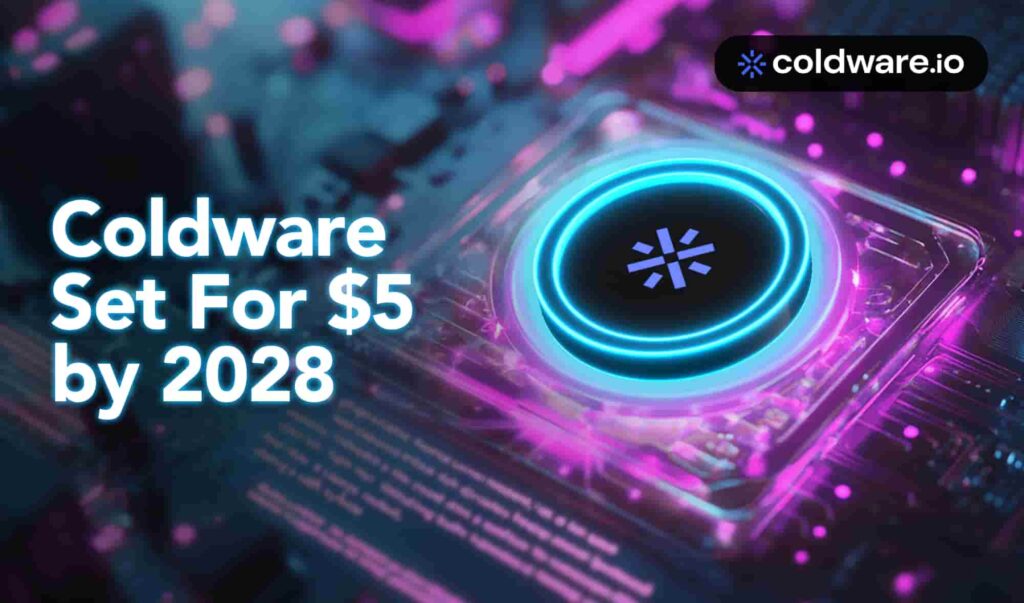Cardano (ADA) has long been a major player in the cryptocurrency market, known for its technological advancements and strong ecosystem. As the first blockchain project to introduce the Ouroboros protocol, Cardano quickly gained recognition for its commitment to scalability, sustainability, and decentralization. However, with the rise of new, innovative projects like Coldware (COLD), Cardano’s dominance may be challenged. Coldware (COLD) is a coin that blends the viral appeal of other tokens with real-world utility, attracting growing investor attention. But will Cardano (ADA), with its established track record, be able to fend off Coldware (COLD) as the next cryptocurrency market leader?
Coldware (COLD): The New Crypto Player with Potential
Coldware (COLD) has become a standout token in the crypto coin market, quickly attracting the attention of retail investors. While its roots are grounded in the coin culture, Coldware (COLD) distinguishes itself by focusing on both community engagement and real utility. Its affordability and explosive growth potential make it an attractive option for those looking to capitalize on the next big wave in crypto.
Coldware (COLD) offers a low entry point for investors, priced at just $0.0045, making it highly accessible. While many crypto coins struggle to retain value once the hype fades, Coldware (COLD) is positioning itself as a token with real-world applications, providing both speculative gains and long-term growth opportunities. The combination of viral appeal, low cost, and practical utility has allowed Coldware (COLD) to rise quickly in popularity, presenting a unique challenge to Cardano (ADA) and other established cryptocurrencies.
How Cardano Can Compete with Coldware (COLD)
Cardano (ADA) is well-established, but its future success may depend on how well it adapts to the evolving cryptocurrency market. With projects like Coldware (COLD) gaining ground, Cardano will need to increase its focus on accessibility and community-driven growth. While its technological prowess is indisputable, the market is increasingly favoring cryptocurrencies that offer both utility and community engagement, something Coldware (COLD) excels at.
In order to compete with Coldware (COLD), Cardano must continue to innovate, particularly within the DeFi and NFT ecosystems. Cardano’s Hydra scaling solution could allow it to handle more transactions and improve its appeal to developers, but it must also ensure that it retains a strong community presence and grows its user base in the way that crypto coins have managed to do.
Cardano’s Foundation: A Long Road to Success
Cardano (ADA) has been one of the most recognized blockchain projects since its inception. Founded by Charles Hoskinson, one of the co-founders of Ethereum (ETH), Cardano has focused on creating a blockchain that addresses scalability issues while maintaining decentralization. Through the use of the Ouroboros proof-of-stake protocol, Cardano ensures that transactions are secure, fast, and energy-efficient, positioning itself as an environmentally-friendly alternative to proof-of-work systems like Bitcoin (BTC).
As Cardano’s ecosystem continues to expand, several major developments, such as the introduction of Hydra (a Layer-2 scaling solution) and the growth of its decentralized finance (DeFi) applications, have attracted significant investor interest. Recent announcements, including partnerships with prominent figures such as Donald Trump Jr. and integration with the World Liberty Financial stablecoin, further solidify Cardano’s role in the global financial landscape. However, despite these achievements, Cardano faces an emerging challenge from Coldware (COLD), a newer cryptocurrency that is gaining traction in the crypto coin space.
Will Cardano (ADA) Hold Its Ground?
While Coldware (COLD) is a promising contender, Cardano (ADA) remains one of the most established cryptocurrencies on the market. Its blockchain offers scalability, security, and sustainability—critical features for long-term growth. Additionally, Cardano’s development team continues to build on its strong foundation, making it a serious competitor for years to come. Cardano’s reputation, along with its increasing adoption by institutional investors, ensures that it is positioned well to weather competition.
However, the rapid rise of Coldware (COLD) and similar crypto coins signals a shift in market dynamics. Investors are becoming more discerning and are looking for projects that combine real-world applications with strong community support. Coldware (COLD) is embracing this shift, making it a strong contender in the cryptocurrency space. As the market matures, Cardano (ADA) will need to prove that it can continue evolving to meet these new demands, or risk being overshadowed by newer, more dynamic projects.
Conclusion: The Future of Cardano and Coldware (COLD)
The battle between Cardano (ADA) and Coldware (COLD) represents a larger shift in the cryptocurrency market, where the focus is moving from hype-driven investments to more utility-driven assets. While Cardano (ADA) has established itself as a leader in blockchain technology, Coldware (COLD) is quickly carving out a niche by blending crypto coin enthusiasm with tangible value.
Looking ahead, both Cardano (ADA) and Coldware (COLD) have strong growth potential, but the way they engage with their communities and expand their use cases will determine which project comes out on top. For investors, the choice between Cardano (ADA) and Coldware (COLD) will depend on their risk tolerance, investment strategy, and belief in each project’s future growth. Regardless of the outcome, both tokens are worth watching closely as the cryptocurrency market continues to evolve.
For more information on the Coldware (COLD) Presale:
Visit Coldware (COLD)
Join and become a community member:
